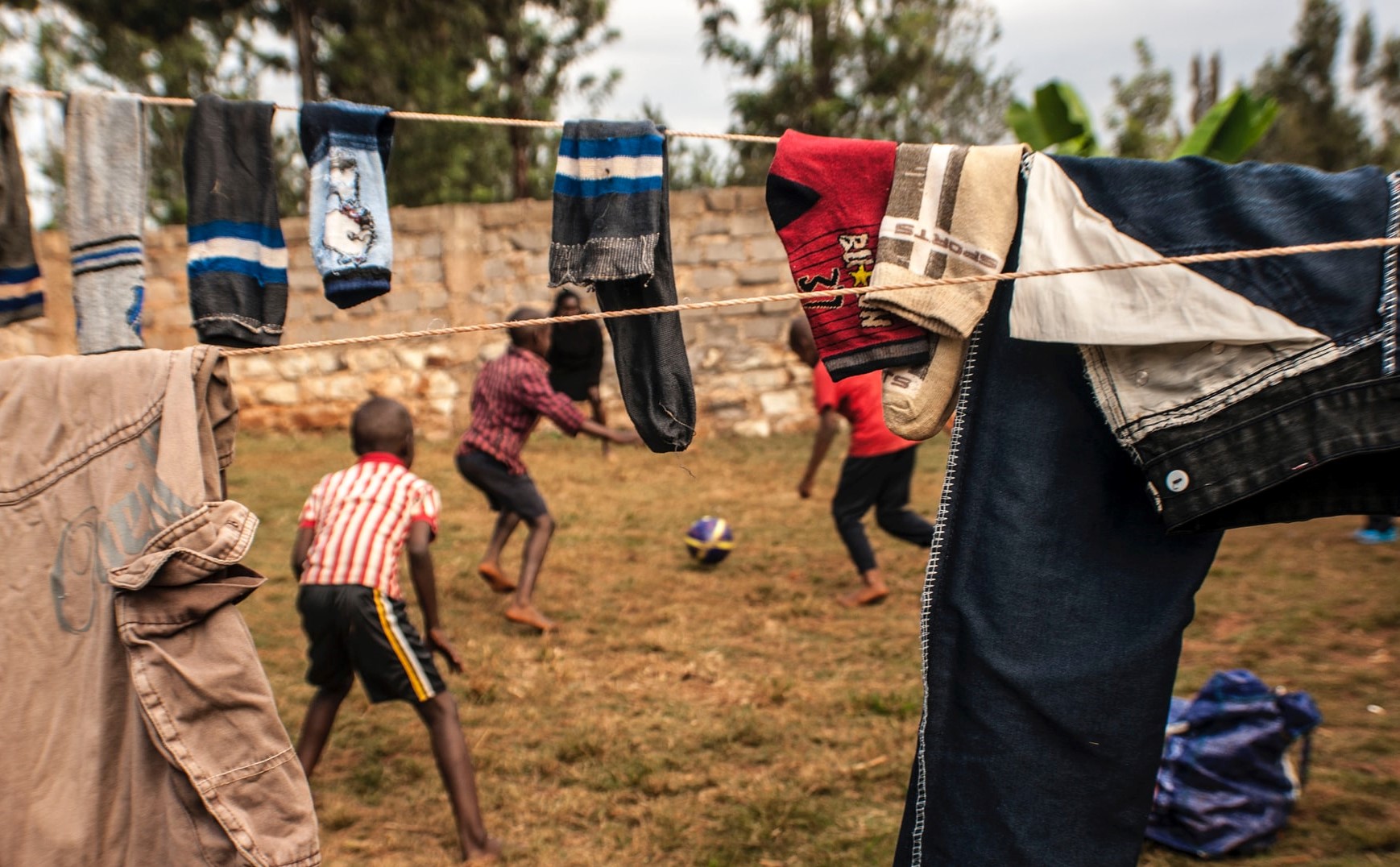Not just vintage. Second-hand business models earn more shares in the fashion market than ever, with a positive impact on the ecological footprint. Every day, though, part of what the West decides not to wear is sent with a one-way ticket to Africa, which is good for the environment, but not for the local economy.
Resale, rental, repair and remaking are four business models with untapped potential. This is confirmed by the Ellen MacArthur Foundation in the report Circular Business Models: Redefining Growth for a Thriving Fashion Industry (2021). According to estimates, the second-hand share on the fashion global market could indeed leap from today’s 3.5% to 23% by the end of the decade. The opportunity, with a value of $700 billion, would guarantee a reduction of 340 million tonnes of CO2: in a nutshell, it’s more than nations such as France or Thailand emit annually. And this would not be the only advantage: biodiversity would also be thankful. Wardrobes with more used garments translate into less soil to produce raw materials, water use reduction and less pollution linked to virgin fibre treatment.
The clothes of the dead white man
So, money and the environment cross paths at a right angle, like warp and weft. However, on the loom of the impact of the fashion industry meridians and parallels also intersect. Strange though it may seem, not in the whole wide world they are called “second-hand clothes”.
In Ghana, for instance, there’s an expression showing how foreign the concept of excess is in their country’s culture, obroni wa wu, literally meaning “the clothes of the dead white man.” They are part of our waste, they are the garments the North discards, collects, sorts, packages and ships towards those developing countries. They are so many they breed, in those who receive them, the idea that only those who are dead could turn their back on such material abundance.
This thought may arise spontaneously in places such as Kantamanto, a market in Ghana’s capital, Accra. Over there, every week, in what is considered the largest second-hand clothes market in West Africa, a microcosm of five thousand sellers receives millions of garments from the US, Europe and China. Obroni wa wu: clothes selected by white men, the so-called tropical mix. They are shipped in 50 kilo bales. Every time they are unloaded from a container, you can feel fresh mourning with no dress code in the market.
In Africa, in fact, retailers buy blindly. Every bale becomes an inheritance to be accepted without the benefit of inventory. Inside, they could be finding anything. Its content, paid even up to around one hundred dollars, could be worth thousands or zero. And this has consequences: “Second-hand clothes are part of us. I’ve been wearing second-hand garments since I was a child”, Akuvi Adjabs, a Ghanaian activist and journalist, tells Renewable Matter. “Up to five years ago, going shopping to Kantamanto was pleasant and you could get good bargains. Today, there’s nothing to buy. Almost all garments are in poor conditions, faded, unwashed and sometimes utterly unusable. The reason is simple: most of these clothes are fast fashion, they’re not meant to last. Global North’s big producers should start from here to assess their strategies for their corporate social responsibility. Only 10% of what arrives can be resold. And upcycling is only possible with denim, jeans fabric.” All the rest, the unusable, goes back to being waste. With no recycling organisation or infrastructure, waste management means ending up in landfills or, worse, along Korle Lagoon quays where the highest heap is about twenty metres.
Impact of Second-hand clothes on African Economy
Every year, according to the UN Statistics Division, millions of tonnes of used garments reach the African continent, including Kenya, the Congo, Nigeria. Since 2019, Rwanda, Uganda and Tanzania have tried to stop imports. The towers of unused clothes, such as that in Accra, every day increase both in number and size.
At their base, though, there’s still an army of workers. At Kantamanto alone, the workforce is made of 30,000 people. Most of them are carriers, Kayayei. These women, often underage and with children in tow, leave their rural areas to seek their fortune. They carry whole bales of used clothes from a retailer to the next, sometimes for miles and for a few dollars a day. Exploitation goes hand in hand with injuries. Clearly, the second-hand market does not benefit the local economy.
“In Berlin, during the first fashion week, I was asked why I wanted to be a designer. I replied that my mission is to help the community. But I think that very few people grasped the meaning of my answer,” Mehmuna Schumann, Malawi-born fashion designer and founder of the Afrofashion brand, tells our magazine. “The more second-hand clothes the less the need for people producing them. If Africa will continue to import, it will never develop an industrial culture. My career actually started by upcycling used clothes, which I hybridised with locally-produced pagne and chitenje cotton. This ensured some economic security for the families I employed.” According to Mehmuna, slow fashioning means creating value in local areas while promoting them. Her examples go well beyond Malawi. “After my daughter was born, since she has albinism and therefore at risk of persecution, we moved to Mali for ten years. I started to use this extraordinary cotton, which was farmed and spun in some villages. The whole process, not just the profit, benefited the community. We’re still far away from being able to compete with Western industries. Even here where I live now, in Tunisia, existing infrastructure (with Italian facilities as well) feed delocalised productions. Small local productions scattered around the continent should form a network. Only in this way, in the future, can a traceable supply chain be started. This should be authentic, sustainable and not relying on imports only.”
Image: Belle Maluf (Unsplash)
Download and read the Renewable Matter issue #39 on Circular Fashion



